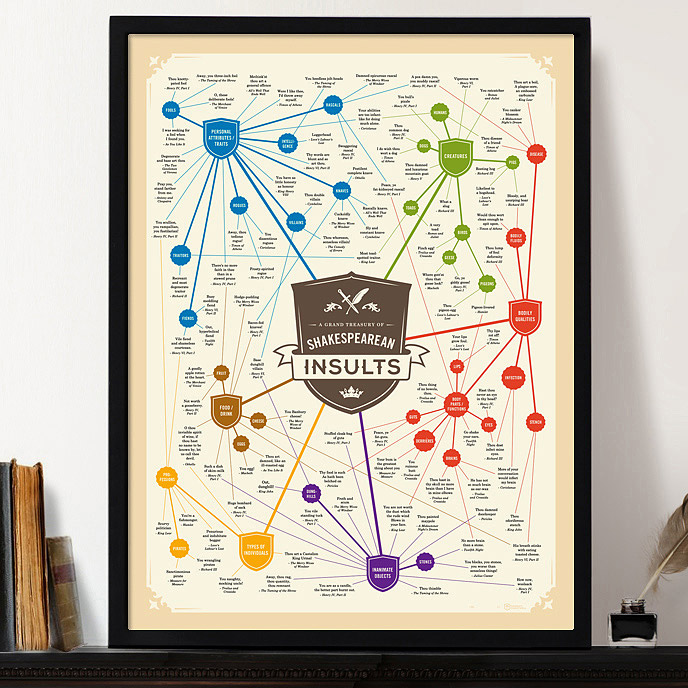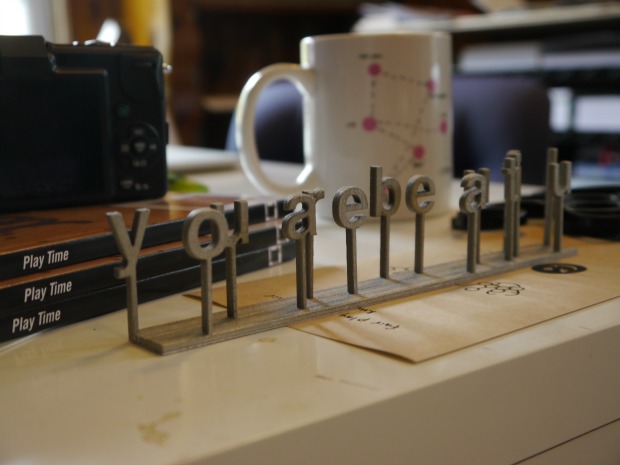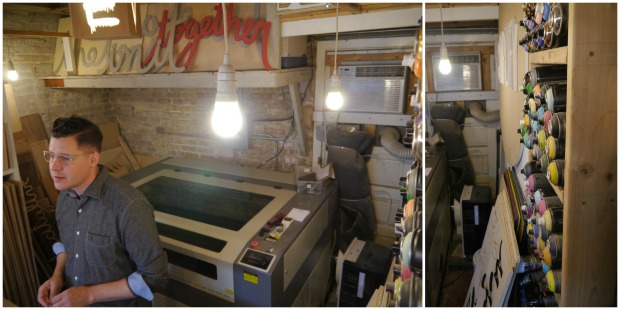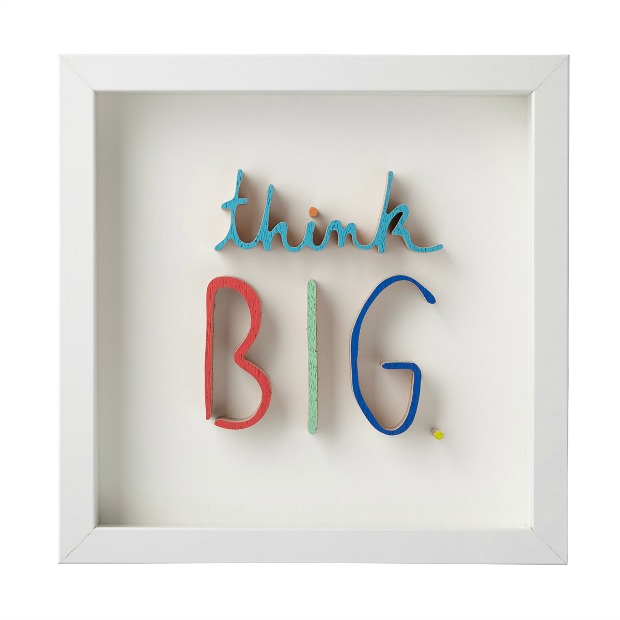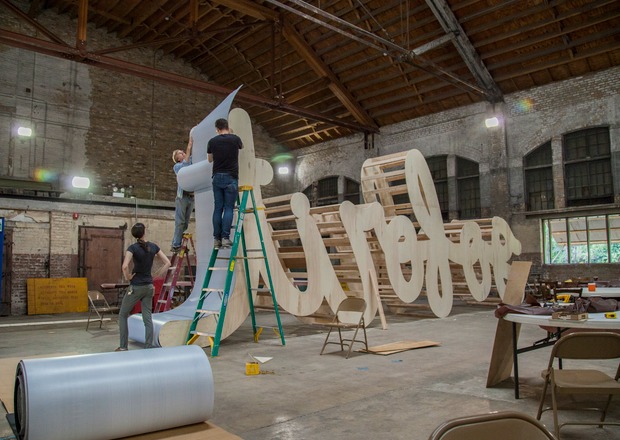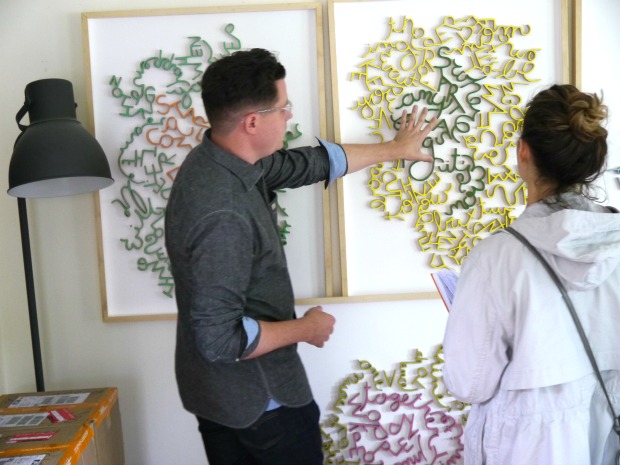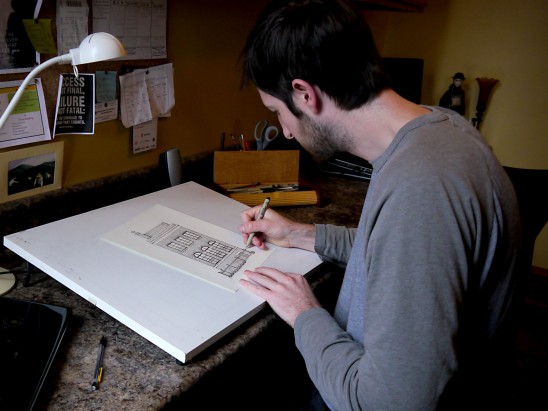Artist’s sketchbooks, notebooks, drawing pads–whatever term you prefer–have been objects of study, fascination, and even obsession for museum curators, art appreciators, collectors, and the like. Sketchbooks contain the process people often struggle and crave to understand about art: how an artist germinates ideas, eliminates the unattractive ones, and gradually evolves those ideas to their final form. The creative process is allusive and captivating, and I like to think of the sketchbook as treasure map to understanding that process.
Tim Sanders, who created A Grand Treasury of Shakespearean Insults and 1980s Slang Chart with his wife Aurelia, was kind enough to share some of his sketchbook pages with me on a recent visit to his studio in Seattle, WA. His sketchbooks were large, maybe 11×14, and made of that delightfully thick, creamy artist’s drawing paper. Tim’s sketchbooks were among the most organized I’ve ever laid eyes on. Instead of the John Cage-like scribbles and quickly jotted phrases that seem like a secret code only the creator would understand, many of the pages I peeked contained a grids of small squares. These squares represent poster ideas–hundreds of them.
One of my favorites appears prominently at the top left corner of the page and reads “Practice Bravery.” Cleverly, Tim has drawn out Bravery in a script of small hash marks, confined by guiding lines. This brings to mind memories of staring at the the poster guides for learning cursive that hung in my fourth-grade classroom, a memory made more poignant by the fact that we rarely use script in this digital age. Some of Tim’s ideas are a bit more sarcastic, especially when speaking to the workplace.
Another favorite of mine reads “NOTICE: Work meetings crush the soul.” This warning resonates with most of us who work in an office, and putting it on a poster means that when we see it, we can all nod our collective heads in agreement that meetings can, in fact, crush the soul! As an art director and former playwright, Tim certainly has a knack for using his art to reflect the times and engage his viewers.
To develop and push his ideation, Tim has a system for selecting the most worthy of his poster candidates to continue to the next level of development. Across the pages are clues of a cryptic system of black check marks, green hearts, and green dots, some of which are circled with blue pencil. Instead of asking Tim to hand over the key to his editing notations, I prefer they remain part of the mystical creative process. Tim’s sketches and notations are less like accurate GPS directions, and more like a treasure map illuminating milestones along his creative path from idea to final piece. Undoubtedly, there will be unexpected twists and turns to reach the poster.


